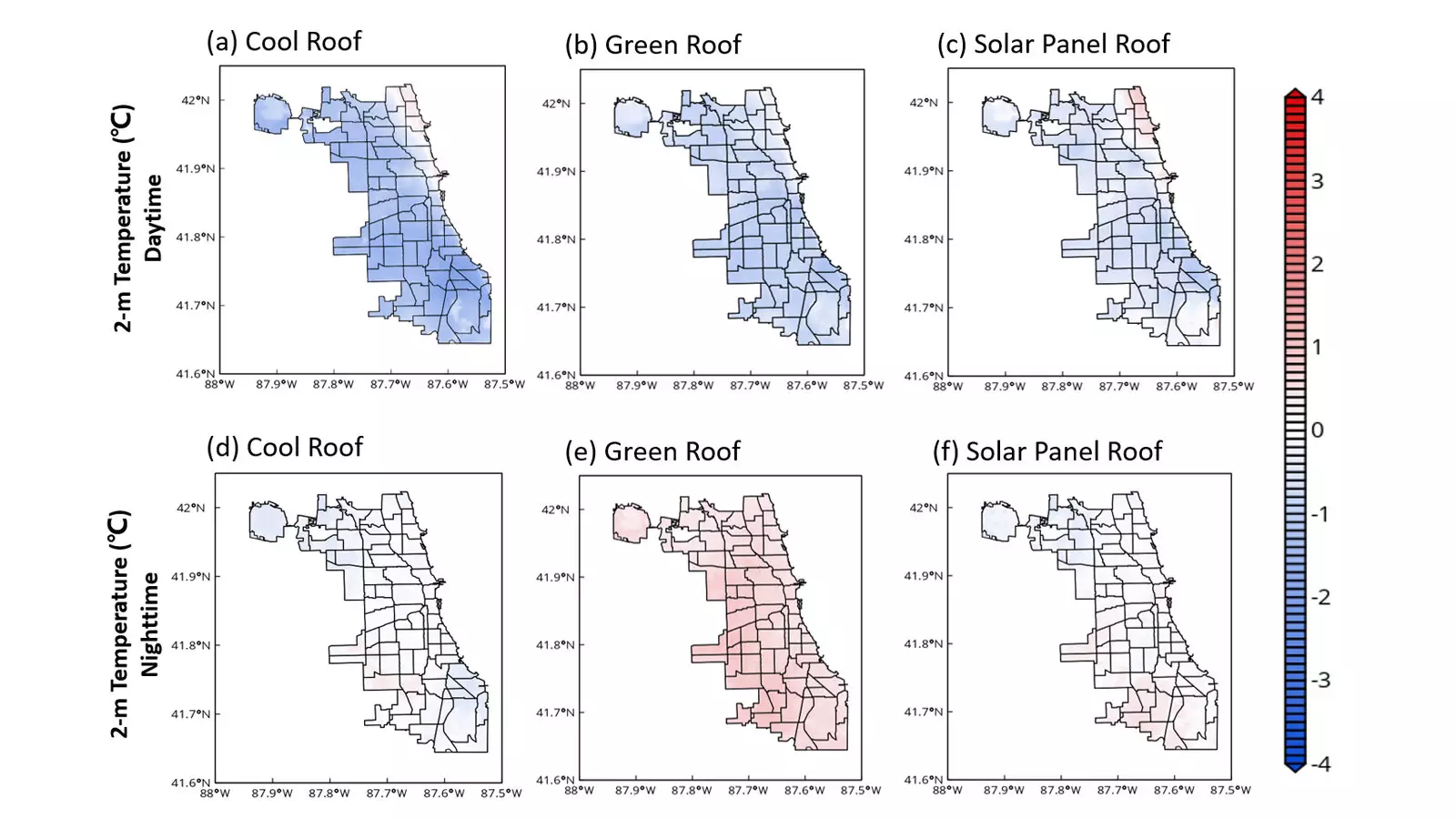Urban areas often suffer from the urban heat island effect, where concrete, asphalt, and steel structures retain heat and raise temperatures. To combat this issue and keep residents cool, decision makers and communities in cities like Chicago need information on effective strategies. Recent research conducted at the U.S. Department of Energy’s Argonne National Laboratory has focused on the impact of different roofing materials on near-surface temperature and cooling energy demand in the Chicago metropolitan area.
Argonne researchers simulated the Chicago metro area and analyzed the effects of three types of roofs – cool roofs, green roofs, and solar panel roofs. Cool roofs, painted in heat-reflecting white, showed the greatest potential for reducing near-surface temperatures, with a decrease of 1.5 degrees Celsius. Green roofs, covered in vegetation, achieved a decrease of 1.2 degrees Celsius, while solar panel roofs resulted in a decrease of 0.6 degrees Celsius.
In addition to lowering temperatures, all three roofing strategies contributed to reducing air conditioning (AC) energy consumption. Cool roofs had the most significant impact, reducing energy demand by 16.6%. Green roofs and solar panel roofs reduced energy demand by 14.0% and 7.6% respectively. Among the three strategies, cool roofs demonstrated the best overall cooling effects and energy savings. These roofs are also cost-effective and do not require additional water.
The results of this research can inform sustainable development approaches in urban areas like Chicago, helping to lower cooling energy demand during summer months and minimize greenhouse gas emissions in the long term. Stakeholders can use this valuable information to plan and implement effective mitigation options.
This study was conducted as part of the Community Research on Climate & Urban Science (CROCUS) Urban Integrated Field Laboratory. CROCUS, led by Argonne in partnership with academic, community, civic, and industry organizations, aims to study urban climate change and its impact on environmental justice. The findings of this baseline study will assist CROCUS communities in testing and planning future mitigation options.
The researchers acknowledge the need for further research and improvement in modeling roofing options. To incorporate green roofs into computer models, researchers will take measurements at various levels, including surface and building levels, to better understand the energy and water dynamics of green roofs. The lack of available measurements for green roofs underscores the necessity to refine calculations and models for accurate representation.
The team also aims to improve the resolution of their model to the street scale, allowing for differentiation between houses and streets. This will help answer important questions, such as the cooling effects of planting trees near buildings and pavements. By undertaking these efforts, the researchers hope to develop city-scale and global-scale models for each roofing option.
The research conducted by Argonne’s scientists relied on supercomputing resources available at the Argonne Leadership Computing Facility (ALCF) and the National Energy Research Scientific Computing Center (NERSC). By utilizing these advanced computing facilities, researchers were able to analyze and process large amounts of data effectively.
The study from Argonne National Laboratory sheds light on the effectiveness of different roofing strategies in mitigating urban heat islands. Cool roofs, green roofs, and solar panel roofs all show promise in reducing near-surface temperature and energy consumption. This research provides valuable insights for decision makers and communities seeking sustainable approaches to address the challenges posed by urban heat islands.


Leave a Reply